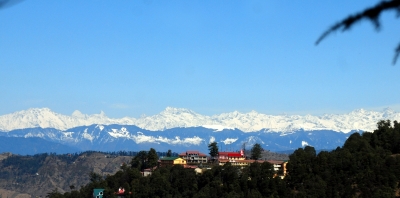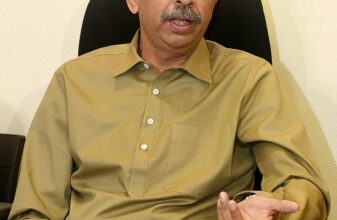Winter snow plays hooky with Himachal impacting farming, tourism, water security

Shimla, Jan 21: After an extremely wet southwest monsoon in Himachal Pradesh in 2023, when even the cold desert Lahaul-Spiti, the rain-shadow zone, had to face a deluge, this winter is witnessing a lack of precipitation across the state, turning the mountains brown due to the lack of a “blanket of snow”.
Locals and meteorologists say this winter is harsh, like the previous ones with temperatures staying close to sub-zero, but there is departure from average precipitation, crucial for winter agriculture and horticulture crops.
The lack of snow, owing to the decrease in frequency and intensity of Western Disturbances (WDs), may also affect the runoff patterns during the summer by reducing the availability of waters in streams and rivers, impacting farming and tourism.
As per the India Meteorological Department (IMD), Himachal Pradesh received light to moderate precipitation on January 17 at isolated places. The total cumulative precipitation received in Himachal Pradesh in this month, till January 18 is 0.1 against normal precipitation of 43.1, a departure of minus 99.7 per cent.
Experts say there might be reduction in crop yield due to cold winds at the flowering stage.
Members of the hospitality industry say the long spell of snowless days have ruined the plans of tourists to holiday in the snow.
“Himachal Pradesh finds itself draped in shades of brown instead of the customary ‘winter white’,” remarked a Shimla-based hotelier, DP Bhatia.
Also the number of forest fires, common during peak summer, has abnormally spiked this winter. There have been 2,050 incidents of forest fires in Himachal Pradesh between October 16, 2023 and January 16, 2024, as per the Forest Survey of India, compared to 296 incidents during this period in 2022-23.
As per IMD data till January 18, the state has seen the lowest precipitation in 123 years so far. The previous low was in 1966 when the precipitation was as low as 99.6 per cent, while it was 98.5 per cent in 2007, 92.4 per cent in 1902 and a low of 91.4 per cent in 1986.
As per the Met office, weather will remain mostly dry in the state till January 25. Dense to very dense fog along with cold wave and frost conditions are likely to continue at isolated places in hills and plains.
December 2023 was also almost snowless for most of the hill state. A majority of the key rivers — the Chenab, Beas, Parvati, Baspa, Spiti, Ravi, the Satluj and their tributaries originating from the Himalayas — depend upon the seasonal snow cover for their discharge.
Lack of snowfall and the warmest winter in Himachal Pradesh’s cold desert will deplete glaciers faster.
As per a recent study by the Centre on Climate Change of the Himachal Pradesh Council for Science Technology and Environment (HIMCOSTE), the total area under snow cover in the state in 2018-19 was 20,210 sq km which was reduced to 20,064 sq km in 2019-20.
During the peak winter months, the snow cover area reduced gradually from February onwards.
According to HIMCOSTE data, more snow cover has been observed in the Satluj river basin during winter months (November to January) than the Beas and Ravi basins, whereas the Chenab basin has not shown much change in the area under snow cover during that period.
About one-third of the total geographical area of the state remains under thick snow cover during the winter. Solang, the premier ski destination just 13 km uphill from the tourist resort of Manali in the western Himalayas, is deserted without snow cover.
This is a major disappointment for local winter sports enthusiasts, whose livelihood depends upon tourists and skiers, as a snowless winter is creating financial pressures on them.
Solang slopes, which normally remain covered with a blanket of snow from late November to March end, have good potential like the Gulmarg and Auli slopes. “The impacts of climate change are visible here and it is a matter of concern for us. You see the slopes totally devoid of snow cover, a big disappointment for locals whose economy largely depends upon the skiers and tourists,” Chuni Lal Thakur told IANS.
He said these ski slopes normally have more than three feet of snow by this time. Showing photos of snowscapes of yore, Thakur hopes the weather will oblige them with a good spell of snow and the skiers will be back on Solang slopes soon.
For a visibly-worried Ram Charan Negi, who grows peas and barley on his farm of 10 bighas in Lahaul Valley, it has been an almost snowless December-January.
“By mid-January we have at least four feet of snow. You can see brown mountain tops everywhere now. It is a matter of concern as snowfall ensures water security in these remote villages in the summer,” he rues.
The yield of the disease-free, high quality pea and potato crop, grown in natural conditions over the Himalayan peaks, is expected to drop by 30-35 per cent in summer owing to scanty winter precipitation, say agriculture experts.
The decline in summer crops is mainly attributed to scanty water in the snow-fed irrigation system known as ‘kul’ — channels that carry water from the glacier to the fields — in the short summer of Lahaul-Spiti District, a cold trans-Himalayan desert valley dominated by Buddhists.
As the Himalayas, from Nepal to Hindu Kush, wait in anticipation for their annual snow blanket, Himachal Pradesh stands as a blank canvas, yearning for the elusive touch of nature’s frozen artistry.
(IANS)






